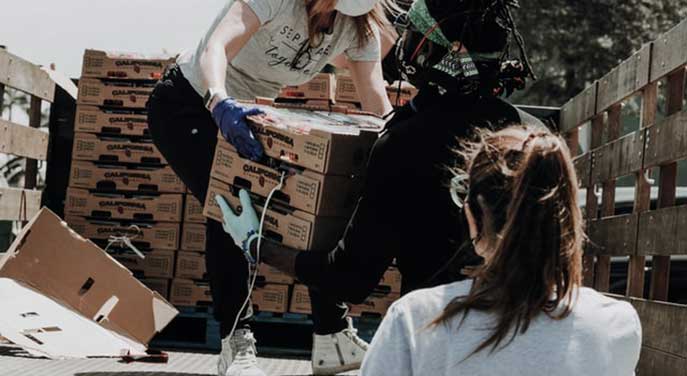Kenneth Brown
of The Clarion
The Kindersley and District Food Bank had its busiest year ever in 2016 and the need for food assistance hasn’t slowed in 2017.
A comparison of statistics for the first three quarters of 2016 and the first three quarters of 2017 – Jan. 1 to Sept. 30 – shows a similar picture for overall need. Statistics from October and November are not included.
The statistics show 499 food hampers were packed in the first nine months of 2016 and 494 hampers were packed in the first nine months of 2017.
The number of clients has decreased more than the number of hampers.
 Hampers are packed according to the number of people in the household, so they could be for individuals or families. There were 1,145 clients in 2016 compared to 1,088 in 2017, so there were 57 fewer clients from year to year.
Hampers are packed according to the number of people in the household, so they could be for individuals or families. There were 1,145 clients in 2016 compared to 1,088 in 2017, so there were 57 fewer clients from year to year.
The food bank provides hampers to people in Kindersley, Eston and Eatonia. Of the 499 hampers packed, 398 went to recipients in Kindersley. Of the 494 hampers packed from January to September 2017, 381 went to recipients in Kindersley.
The total number of hampers for Eston has increased, but the total number of hampers for Eatonia has decreased. The food bank has packed 27 more hampers for Eston in 2017 than in 2016 with a total of 79 in 2017 as compared to only 52 hampers in 2016. Eatonia has decreased from 49 hampers in 2016 to 35 in 2017.
[emember_protected for=”2″ custom_msg=’For more on this story, please see the Nov. 29 print edition of The Clarion.’]
The food bank packs its hampers for families and individuals based on the recommended daily servings of the four food groups for each member of the household, according to Canada’s Food Guide. The age, weight and sex of recipients are other factors.
A hamper is meant to last one week. Hampers are available from January to November.
While the overall hamper and client numbers have decreased, the organization has spent more money on food in 2017 than it did in 2016. The food bank spent $23,774.50 on food in 2017 as compared to $22,324.44 over the same period in 2016.
There has been a decrease in new clients, and an increase in aboriginal and Métis clients.
Leslie Omness, a food bank spokesperson, said fewer hampers have been packed on average since July 2017 than in the previous 12 months. She noted that the overall statistics from 2016 to 2017 are close, so it’s been busy.
“We haven’t had a drastic drop in those numbers by any stretch, so I can’t say that it’s any better or any worse because it’s consistent,” she said.
With respect to the increase in spending, Omness said the cost of food could have increased in 2017. The food bank has always purchased meat, milk, cheese slices, margarine and bread for clients, but now the organization is buying apples for clients with children, the spokesperson said.
Applications from clients are accepted until the 15th of each month, and then clients pick up their hampers about a week later. Applications are available at the Salvation Army thrift store, at Spokes or the Kindersley Family Resource Centre. The food bank never refuses an application from a client, Omness explained.
The food bank is in good shape with respect to finances thanks to excellent community and corporate support, but the organization will never turn away donors because the need for food assistance has been steady, Omness said.
She noted the food bank gets great support from volunteers, but the organization could use extra help at times. For example, she said a large amount of food was just received from the Drive Away Hunger program by Farm Credit Canada, so there was a lot of food to sort for existing volunteers.
If people would like to donate food, time or money to the organization, call 306-460-7022. If there’s no answer, Omness said they could leave a message and their calls would be returned shortly.
There are items the food bank has trouble keeping in stock. Items including apple and orange juice, canned fruit and vegetables, canned ham, chicken and turkey, pasta, peanut butter and cereal “are the types of things that we have to buy quite often because we don’t get enough.” On the other hand, the food bank has lots of macaroni and cheese, canned tuna and salmon, soup and beans.
Omness said the food bank works closely with other non-profit and emergency support organizations in the community, but they each have their own roles. The food bank gets great support from other individuals, community groups and Hutterite colonies in the area. She thanked all of the food bank’s partners and supporters.

